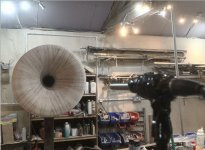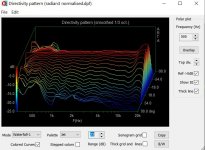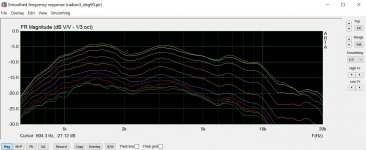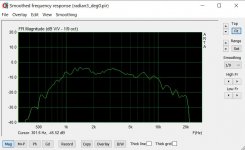BTW, one of the best rated (according to the Olive metric) speakers measured at ASR is the Genelec 8341A. It's remarkably flat and smooth above 4 kHz but overall and below that it isn't as smooth as it could be. Now the DI is slightly more than 2 dB higher at 10 kHz compared to 1 kHz. Would it be rated even higher with a smoother waveguide with 3 dB/decade DI rise? That is the question.
Curiously enough, also a very highly rated is Genelec 8030C.
Curiously enough, also a very highly rated is Genelec 8030C.
Last edited:
If you ignore LF performance, the three highest preference ratings belong to the Genelec 8030C (8.5), Genelec 8341A (8.45), and Neumann KH80 DSP (8.42). I've attached the spinorama (ANSI/CTA-2034-A) and horizontal contour plots I generated from ASR's data.
Attachments
-
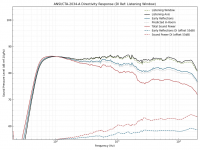 genelec_8030c_directivity.png184.1 KB · Views: 354
genelec_8030c_directivity.png184.1 KB · Views: 354 -
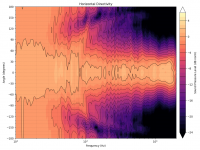 neumann_kh_80_dsp_sample_3_directivity_contour_h.png438.6 KB · Views: 118
neumann_kh_80_dsp_sample_3_directivity_contour_h.png438.6 KB · Views: 118 -
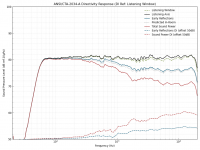 neumann_kh_80_dsp_sample_3_directivity.png176.3 KB · Views: 355
neumann_kh_80_dsp_sample_3_directivity.png176.3 KB · Views: 355 -
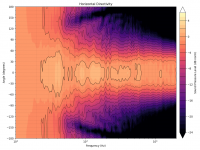 genelec_8341a_sam_directivity_contour_h.png419.9 KB · Views: 309
genelec_8341a_sam_directivity_contour_h.png419.9 KB · Views: 309 -
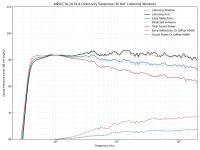 genelec_8341a_sam_directivity.png179.9 KB · Views: 358
genelec_8341a_sam_directivity.png179.9 KB · Views: 358 -
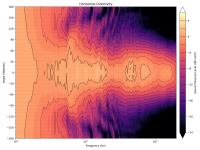 genelec_8030c_directivity_contour_h.png464.9 KB · Views: 313
genelec_8030c_directivity_contour_h.png464.9 KB · Views: 313
Last edited:
- I've probably come up with a final name for the recent, free standing and rolled-back designs. If you look at the contour it kind of reminds the shape of an ear. So I will call it Auris Horn and bring a story that for a perfectly natural and neutral sound reproduction you really need also the sound source to have the shape of an ear. That could catch on! 
Last edited:
Thanks!If you ignore LF performance, the three highest preference ratings belong to the Genelec 8030C (8.5), Genelec 8341A (8.45), and Neumann KH80 DSP (8.42). I've attached the spinorama (ANSI/CTA-2034-A) and horizontal contour plots I generated from ASR's data.
My suspition is that the 8341 got worse rating because it would be too bright in the midrange.
Last edited:
Is there a way to input the k parameter in Ath?introducing the parameter "k" OS-SE Waveguide II
It might be interesting to see the scores after equalizing all of them for a flat listening window response.I think you're probably correct. The NBD_ON metric (narrow band deviation, on axis) is markedly worse for the 8341A.
BTW, one of the (according to the Olive metric) speakers measured at ASR is the Genelec 8341A. It's remarkably flat and smooth above 4 kHz but overall and below that it isn't as smooth as it could be. Now the DI is slightly more than 2 dB higher at 10 kHz compared to 1 kHz. Would it be rated even higher with a smoother waveguide with 3 dB/decade DI rise? That is the question.
That's a good question, but hypothetical. As it stands with this data, it looks to me like a non-rising DI is preferred. Doesn't that support my contention? A few dB rise is fine, but smoother and flatter is still the goal.
The mid-range diffraction in the first speaker above is very pronounced. I would suspect this to be an audible problem. The second one also has the lowest diffraction, which should also add to its preference.
Last edited:
first attempt at polar measurements
This is my first attempt at taking polars. It's a small Ath4 'magic' horn with a Radian 475be. Promising?
I'd be happy if anyone had any comments.
This is my first attempt at taking polars. It's a small Ath4 'magic' horn with a Radian 475be. Promising?
I'd be happy if anyone had any comments.
Attachments
Here we go  I only don't understand what horn was measured - on the photo is that already the huge one with a 2" throat I designed? That Radian is a 1" driver, isn't it. Are you using some throat adapator, or...?
I only don't understand what horn was measured - on the photo is that already the huge one with a 2" throat I designed? That Radian is a 1" driver, isn't it. Are you using some throat adapator, or...?
For the start you need to get rid of the reflections by applying a time window on the measured impulse response(s). In ARTA this is done in the "IMP" mode, after an impulse response is measured, by clicking the left and right mouse buttons before the FFT (frequency response) is calculated. This sets the start and end of the window, which should start just before the impulse and end before the first reflected sound arrives. Then you will have proper polars. (I'm not sure now about how to get a correct phase information as I haven't used ARTA in a long time but that's not important for now - it will be important for crossover desing).
For the start you need to get rid of the reflections by applying a time window on the measured impulse response(s). In ARTA this is done in the "IMP" mode, after an impulse response is measured, by clicking the left and right mouse buttons before the FFT (frequency response) is calculated. This sets the start and end of the window, which should start just before the impulse and end before the first reflected sound arrives. Then you will have proper polars. (I'm not sure now about how to get a correct phase information as I haven't used ARTA in a long time but that's not important for now - it will be important for crossover desing).
Last edited:
I'm not sure... As it stands with this data, it looks to me like a non-rising DI is preferred. Doesn't that support my contention?
Well I think there's another point of view possible, that I have already presented - that the smoothness/absence of diffraction is really what counts the most and that a ruler flat DI (for some limited frequency range anyway) typically prevents that to happen to the maximum possible degree - and there's plenty of evidence for that.
Last edited:
It's so hard to win a discussion when people just discount the evidence!"Trump won!!!"
ahaha... It's the Back Frill Day !
Do you mean smoothness of the response or DI? I would agree that smooth response along the listening axis is essential, but a smooth DI versus a flatter one, that's an open question as to which would be prefered. Of course a flat average DI with lots of bumps is not going to be prefered to a smoother one that rises slightly, but I still believe that a smooth flat DI is going to win out - assuming that the smooth slightly falling listening axis response is already in place.
Yeah, but you assume it as if it was easy. In fact, that's the difficult part to have both. That's what I'm talking about - my experience with all the simulations made in the last year or so suggests that much smoother listening window response can be obtained if DI is left rising a bit. So the logical question comes what's prefered in the end. I don't know the answer...., but I still believe that a smooth flat DI is going to win out - assuming that the smooth slightly falling listening axis response is already in place.
Provided there's no pronounced diffraction around the supposed listening axis. Again, that's the hard part with highly "CD" waveguides. Such waveguide would probably have to be unpractically enormous, if at all... except that listening window response can be smoothed with EQ, but DI cannot.
- Home
- Loudspeakers
- Multi-Way
- Acoustic Horn Design – The Easy Way (Ath4)
